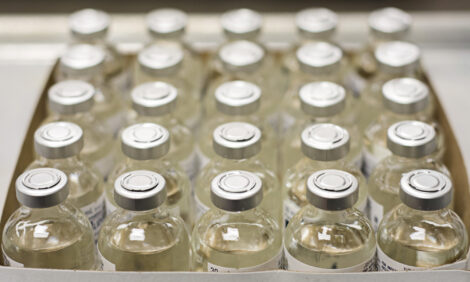



Additional research needed to determine peracetic acid exposure in poultry plants
Scientists have found that there is considerable variation and lack of precision between tested methods related to peracetic acid exposure.USPOULTRY and the USPOULTRY Foundation announced the completion of a funded research project at the Georgia Tech Applied Research Corporation in Atlanta in which scientists found considerable variation and lack of precision between tested methods related to exposure of peracetic acid. Peracetic acid has been used increasingly in the food and medical industries as a disinfectant, and its use in poultry processing has further enhanced food safety.
The research was presented at the Poultry Processor Workshop, held in Nashville, Tennesee, and is part of the Association’s Board Research Initiative programme. A brief summary of the completed project is shown below. A complete report, along with information on other Association research, may be obtained by going to USPOULTRY’s website. The project summary is as follows.
Project #139303: An Analysis of Peracetic Acid Exposure in Poultry Plants: Modeling the Relationship of Titration Levels of Peracetic Acid in Water to Airborne Concentrations in the Workers Breathing Zone
(Jenny Houlroyd, Occupational Safety and Health Programs Office, Georgia Tech Applied Research Corporation, Atlanta, Georgia)
Jenny Houlroyd and researchers at Georgia Tech’s Enterprise Innovation Institute recently completed a research project intended to increase industry knowledge of exposure to peracetic acid (PAA) by comparing four currently commercially available exposure monitoring methods and exploring if distance from a source of PAA changed airborne concentrations. The methods selected for use in this study had to be those that were readily accessible for a plant safety and health manager or USDA personnel to utilise for exposure assessment. There are currently no other (published) studies examining the three selected electrochemical PAA sensors with the traditional chemistry method. Data-logged results were then compared to air samples for PAA, which were collected using SKC Non-agency method 57 (based on the Hecht, et al 2004 method).
The findings from the evaluation completed at three different poultry processing facilities indicate there is considerable variation and lack of precision between the methods tested. This lack of reliability was observed both between the measurement methods and within the individual measurement methods. The lack of reliability of the sampling methods indicates a need for additional research into a more stable, robust analytical method that is capable of producing consistent results. Poultry processing facilities are challenging environments for testing due to the number of potentially confounding variables present, including temperature, relative humidity, etc. Overall, based on the lack of consistency, precision and potential accuracy of the four tested sampling methods, caution should be exercised when interpreting the results of any single method at this time.
“This is a perfect example of research funds being rapidly deployed by USPOULTRY and the Foundation to help address an industry critical concern. Like most research, it’s one more ‘brick in the wall’ that will assist our industry with continuous improvement in providing sustainable and wholesome products,” said John Starkey, president of USPOULTRY.
The research summary can be found on the USPOULTRY website. Information on other Association research may also be obtained by visiting the USPOULTRY website.









